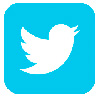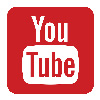Sustainable Technology Program - Survey and Action Plan BuilderItem #: STPAT-1 | Grades K-12
$99.00 Learn How to Craft A Sustainable Technology Program We asked 269 educators how they sustain their technology programs. The most successful schools develop multiple sources of revenue, they trigger strong community engagement, and they prioritize daily support and training for teachers. Take this assessment and get an easy-to-follow action plan that will help you with sustainable funding for your technology initiative. Untapped Opportunities The data suggests that the majority of schools already have funding sources available that can be harnessed for technology programs.
About the Course All of the recommendations were supplied by other schools through a survey of 242 educators, 27 interviews with technology leaders, 28 one-computer-per-child implementation sites, and collected during a year-long study of how successful schools are sustaining their technology programs. The course takes about 30 minutes to complete. You can take it as many times as you like, and instantly get an action plan for the parts of the course that you’ve completed. The elements of the assessment include: 1 - Getting Started 2 - Sustainability of a 1:1 Technology Program 3 - Funding for Technology 4 - Arguments to Obtain Technology Funding 5 - Fundraising 6 - Re-Budgeting 7 - Student Mentors 8 - Community Engagement 9 - Professional Development and Training Behind the Assessment Tool: The Sustainability Study The Project: In 2009, Digital Wish launched the School Modernization Initiative, a one-computer-per-child initiative in 28 schools, directly providing 79 teachers with curriculum and training, and 1,294 students in grades 4-6 with computers. After the first year of implementation, the schools hit a stage where they were comfortably absorbing the change and started asking questions about sustainability. The A. D. Henderson Foundation commissioned Digital Wish to study how schools are sustaining their technology initiatives, and develop free resources that would model best practices. Participants: 242 Survey Respondents 27 Phone Interviews 28 School Site Implementations of 1:1 Computing Initiatives We asked how they sustain their technology initiatives. About the Survey:The survey data was collected through anonymous surveys conducted on www.surveymonkey.com. The data collected here shows anecdotal trends, self-reported by technology leaders who volunteered to participate in the project. Download the Complete Study Here: https://bit.ly/St1ShN
|
|||||||||||||||||||||||||||||||||||||||||||||














